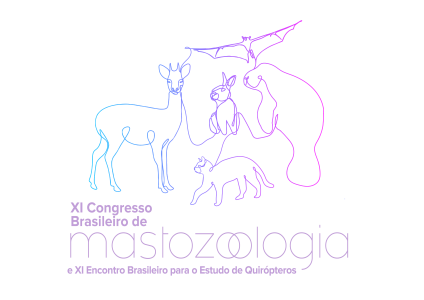Dados do Trabalho
Título:
EFFECTS OF ROAD MORTALITY ON THE ABUNDANCE OF MEDIUM AND LARGE MAMMALS IN THE CERRADO
Resumo:
The extensive road network that cuts through agricultural landscapes in the Cerrado severely threatens its mammalian biodiversity. Road mortality due to collisions with vehicles can reduce population abundance, affecting its persistence in the landscape and increasing the risk of local extinctions. That is particularly worrying for medium and large mammals, which are more vulnerable to the negative effects of roads and traffic. Despite this, there is scarce information on population-level responses to road mortality, particularly comparing species with different life-history traits (e.g. body size and reproductive rate) and behaviour. To fill this knowledge gap, we investigated how road distance and traffic volume affect the abundance of two of the most roadkilled mammal species in the Cerrado – the crab-eating fox (Cerdocyon thous) and the giant anteater (Myrmecophaga tridactyla). We carried out a camera-trap survey in landscapes adjacent to two paved roads, with low (MS-040) and high traffic volumes (BR-267), in the southeast of Mato Grosso do Sul. Using Royle-Nichols occupancy models, we found that road distance predicted the relative abundance of both species. However, while M. tridactyla was less abundant near the road than far from it, C. thous showed the opposite response. We also found that the mean relative abundances of both species were lower in the BR-267 than in the MS-040 study area, but estimates were not significantly different. Our results support the hypothesis that roads act as ecological traps for M. tridactyla. Roadsides may provide foraging opportunities for M. tridactyla, as there is evidence of a greater abundance of ants in these environments. However, as previous studies have suggested, this species may not perceive roads as a threat, and individuals living near roads may be more susceptible to roadkill. Given the species' low reproductive rate, roadkill could lead to decreased population abundance of M. tridactyla near roads. On the other hand, C. thous has an omnivorous diet, often feeding on carcasses. Hence, this species may benefit from food resources provided by roads, which could positively affect its reproduction, outweighing the negative effects of road mortality. While our results suggest that increased traffic volume affects species abundance, that could be a response to road mortality over time, as the high traffic road is much older than the low traffic one. Therefore, we suggest that mitigation efforts should be tailored to M. tridactyla, which is more negatively affected by roads and with which collisions pose a greater threat to human safety. We recommend adopting specific measures to reduce road mortality (e.g. fencing leading to existing or new passages). Moreover, since our results indicate that species abundance is not only affected by road mortality, we suggest associating these measures with efforts to increase habitat quality and connectivity in agricultural landscapes, particularly those with high road density.
Financiamento:
Área
Ecologia
Autores
Vinicius Alberici, Arnaud Léonard Jean Desbiez, Nielson Pasqualotto, Adriano Garcia Chiarello
